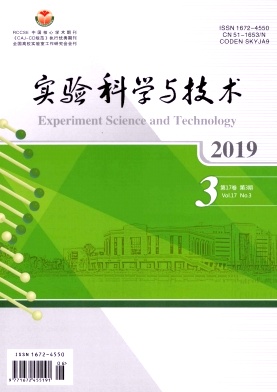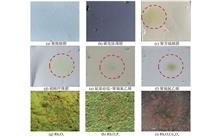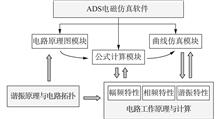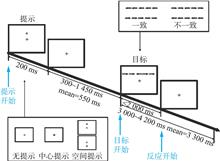 View fulltext
View fulltext
A comprehensive experiment on the cerium-vanadium hollow nanopillar arrays (CeV-HNA) for electrocatalytic oxygen evolution reaction (OER) is designed based on the concept of research-oriented teaching and the scientific research achievements of the teacher. Vanadium based metal organic framework nanopillar arrays were firstly prepared on foam nickel by in-situ growth, and then Ce salt etching and high-temperature calcination were executed to construct CeV-HNA, achieving a freestanding catalyst. Furtherly, scanning electron microscopy, X-ray diffraction, X-ray photoelectron spectroscopy and other analytical testing methods were employed to characterize the structure of the prepared catalyst. Finally, its OER performance was investigated. This teaching experiment is comprehensive, cutting-edge and interesting, which contributes to exercise students’ comprehensive practical abilities, stimulate their research enthusiasm and cultivate their innovation ability.
High energy X-ray irradiation can cause physicochemical changes on the surface of some samples, causing in the obtained X-ray photoelectron spectroscopy (XPS) data cannot truly give feedback to the physicochemical state of the sample surface in the process of XPS analysis. Clarifying the influence and rules of X-ray on the physicochemical properties of the sample surface is the key to accurately obtaining XPS data. Herein, a variety of representative materials are selected to obtain the XPS analysis results under continuous X-ray irradiation, and the effect of X-ray on the physicochemical state of the sample surface is explored. The results reveal that X-ray could cause surface physical burns, thermal decomposition, destroying unstable chemical bonds, and even inducing reduction reactions for specific samples. The regularity of the influence of X-rays on the physicochemical states of the sample surface during XPS analysis and the method of reducing the influence of X-rays on the analysis results are described, which provides a theoretical support for efficient and accurate acquisition of XPS data.
Virtual simulation software is a necessary tool for teaching experiments of engineering subjects in universities. For complex experiments with strong research and involving many experimental equipment, virtual simulation software is a good support for experimental courses. Aiming at the series resonant circuit in the course of electrical and electronic basic experiments, this paper develops a new circuit design method using advanced design system (ADS) electromagnetic simulation software. Based on ADS, the calculation formulas of quality factor, resonance frequency and resonance bandwidth of radio-frequency RLC series resonance circuit can be demonstrated. The parameter analysis and an optimization of RLC series resonance circuit can be easily carried out. In conclusion, the proposed virtual simulation method is helpful to teach the working principle and experimental flow of RLC series resonant circuit, which can further improve the optimized design of RF circuits.
Under the background of “new engineering” with discipline integration, a practical training course on electroencephalogram (EEG) processing and analysis for the senior undergraduates majoring in biomedical engineering is set up. In this experiment, the multi-channel EEGs of healthy subjects under orienting in attention network are taken as the research objective, and the spatial distribution of EEG characteristic band power is analyzed, to provide support for the study of the mechanism of attention. Through this experiment, students are required to apply theoretical knowledge to practice to master the skills in data preprocessing, time-frequency analysis, frequency band extraction and power distribution of EEG signals, which improve their ability to analyze and solve problems independently. Furthermore, the application of scientific research to undergraduate experimental teaching can broaden students’ scientific horizons, improve their interest in scientific research, and exercise their scientific research thinking. It is definitely helpful to cultivate high-quality compound “new engineering” talents needed by emerging industries in the future.
Proportional coefficient, integral coefficient, and differential coefficient, as parameters for adjusting the dynamic response of the controller system, play an important role in the proportional integral differential (PID) control. In order to study the flow control characteristics of the forward bending centrifugal pump under the PID control, with constant flow rate as the control objective, the specific performance of PID parameters in different ranges and the control characteristics of each link are tested. The research results indicate that unstable oscillation in flow control of centrifugal pumps can cause motor start stop. Due to the limit up protection limitation of the frequency converter, a high proportion coefficient will not shorten the initial flow regulation rise time of the control, and will increase the overshoot and reduce stability, therefore, a lower proportion coefficient should be selected. The upper limit of overshoot caused by integral saturation is 33.50%. Continuing to increase the integral coefficient can shorten the steady-state time until the coefficient is too large and affects stability, leading to oscillation. If we try to avoid overshoot as much as possible and choose an integral coefficient of 0.5, the flow regulation will fluctuate and quickly stabilize near the target value after the initial rising stage, with a weak overshoot of 8.82% and a steady-state time of 7.4, which has the best control effect in testing. The flow advance regulation related to differential coefficient plays a weak role in the actual control, and does not significantly improve the fluctuation in the regulation process. Finally, based on the above conclusions, a reference is proposed for the optimization of PID tuning in the flow control of variable frequency centrifugal pumps.
Using the agricultural base road as the test site, the VBOX 3i data acquisition system and its corresponding sensors and data conversion modules as the testing software and hardware, the design of the automobile road test project was completed under a reasonable experimental teaching organization design. After three sessions of students’ practice, the results show that the test equipment can meet the testing requirements, and the test operation process is simple and reasonable, which it can fully mobilize students’ enthusiasm and subjective initiative, and effectively improve students’ ability to independently solve practical professional problems.
In order to cultivate top-notch talents, a experimental system for the course of Fluid Thermophysical Testing Techniques has been developed targeting undergraduate students in the Thermal Fluid International Class. The course includes four experiments: temperature and pressure measurement experiment, saturated vapor pressure measurement and critical phenomenon observation experiment, liquid density measurement experiment, and liquid motion viscosity measurement experiment. These experiments are derived from research experiments on thermophysical properties, with all experimental equipment independently developed. The course provides comprehensive pre-lab preparation, hands-on operation during the experiments, and post-lab analysis, offering a rich learning experience. The high level of student engagement is reflected in their active participation throughout the experimental process. Over the course of five years since its introduction, this experimental course has received consistent praise from students, demonstrating its effectiveness in cultivating outstanding talents.
Cytogenetic experiment is a required course for plant production majors. The traditional teaching method of it is generally based on the verification experiment, which is difficult to stimulate students’ practical motivation and recognition of the major. Considering the disadvantages of confirmatory experiment, the confirmatory experiments are designed as exploratory experiments, and both in and out of the classroom with online teaching are conbined. In this class, students are considered as “scientists”, and are encouraged to participate in the whole experimental process. This type of teaching pays attention to students’ personality development and experience and feeling, and let students become the leader of the experiment, which stimulate students’ learning motivation and professional interest, effectively enhance their innovative ability.
A comprehensive rapid inspection experiment for students majoring in quality management engineering is designed. The experiment uses a portable spectrometer to quickly collect sample quality characteristic data, and then uses a quality statistical tool and an intelligent learning algorithm to achieve rapid data analysis and pattern revelation. By irradiating dairy products with a Raman spectrometer, scattering characteristic signals of the samples are obtained, and the data collection for each experimental sample only takes 60 seconds. Feature peaks are selected and quality statistical control analysis tools are uesd to draw a sample quality control chart, which can describe the fluctuation of sample quality. Furthermore, by combining an extreme learning machine algorithm with data preprocessing methods, the rapid identification of sample brands can be optimized, with a recognition rate of 97.3% and an algorithm running time of only 1 s.
For the educational needs of artificial intelligence major, adhering to the principles of associating closely with the theoretical course and reflecting teaching characteristics, the experimental course of Computer Composition and Embedded Systems is expanded and improved. Combining parallel convolution computation in embedded systems with morphological filtering in image processing, a circuit design experiment for morphological filtering parallel computation is designed, which is based on the Logisim simulation platform. By designing both circuits and test image cases of morphological filtering, and comparing and analyzing the characteristic differences of different filtering operations, students can not only integrate relevant knowledge from various courses, but also exercise system design skills. Furthermore, it lays the foundation for learning subsequent courses such as intelligent chips.
Based on Matlab Robotics Toolbox, only simple simulation and verification can be carried out. It is urgent to design comprehensive innovation experiments to cultivate learning ability and engineering practice ability of students. By integrating computer vision and robot theoretical knowledge, a comprehensive simulation experiment of image contour rendering including image segmentation and edge detection, forward and inverse kinematics, and path planning is proposed. The purpose of the experiment is to cultivate students to solve problems in the field of complex robots, and guide students to form a unique way of thinking in the field of robotics. It has important theoretical significance and practical value for the cultivation of students majoring in robotics under the background of new engineering construction.
Practical teaching is an important way to cultivate diversified and innovative talents. The analytical testing method is a practical course that students of science, engineering, agriculture, medicine and other disciplines must master. The problems existing in the course is pointed out, including outdated content and separation from industrial demand. With the help of the advantages of the public technology platform, a set of “teaching-research-industrialization” trinity practical teaching mode and “two-step method” teaching process is proposed. The teaching subject of the course is transformed from a professional teacher to a public technology service platform, which makes the “practice” feature of the course more obvious. The reform program provides an important way and method to cultivate diversified and innovative talents.
In recent years, carbon dots (CDs) with special optical properties and excellent biocompatibility, have become a popular fluorescent nanomaterial in scientific research. Under the guidance of science education integration, the project combines scientific hot spot with undergraduate experimental teaching. Series of experiments are designed to investigate the effects of experimental conditions, such as reactant ratio, reaction mode, reaction duration, product concentration and pH value on the properties of materials. The results show that CDs with good fluorescence properties can be obtained by controlling the ratio of urea and citric acid at 1∶3. The reaction mode is microwave high fire for 2.5~4 min or muffle furnace reaction at 200 ℃ for 1.0 h. In the comprehensive innovation experiment class, the starch-based CDs fluorescent powder can be obtained, by introducing starch substrate into CDs, which is adaptable for the fingerprint detection in multiple scenes. As a result, the scientific innovation which is divergent thinking of students will be cultivated and enhanced, as well as the sense of participation and social responsibility in the field of social security.
The course of Applied Optics serves as the cornerstone for majors in optics and optoelectronic information. The conventional pedagogical approach primarily emphasizes in-class instruction, with post-lecture exercises aimed at reinforcing fundamental knowledge points. However, this method offers limited support towards achieving the desired outcome of “solving complex engineering problems” within the engineering certification curriculum system. This paper advocates for a “top-down” teaching model based on engineering project cases, introducing the instructional case of “line scan wide field fundus camera”. It integrates the fundamental principles of each course component into specific optical system modules and key components. Engineering practice cases are utilized to guide the gradual development of each content aspect, fostering students’ adoption of a scientific thinking model. Furthermore, a simulation practice case involving “LiDAR optical transceiver system” is introduced to facilitate practical training in the optical system analysis and design, thereby deepening comprehension of basic principles and enhancing engineering practice proficiency.
The article discusses a comprehensive project course for sophomore and junior undergraduate students. This course takes campus security as the background and guides students to integrate cloud computing, Internet of Things and mobile application technologies into the security field to build a set of cloud-edge-based security system. The project covers the design and implementation of cloud platforms, edge devices and mobile terminals. The cloud platform is responsible for data storage, analysis and management, including user management, device management, video monitoring and other functions. Edge devices use Raspberry Pi for real-time data processing and decision-making, and connect to terminal devices such as cameras, temperature and humidity sensors, and servos. In addition, a mobile application is developed using WeChat Mini Program to provide users with a convenient usage experience. During the implementation of the project, complex engineering issues such as multi-terminal system data interaction and face recognition driving the steering gear to open and close doors are solved. Furthermore, the article discusses key issues such as data encryption and access control from multiple dimensions, ensuring system security and privacy protection. Through the design and implementation of this comprehensive project course, students’ practical abilities have been enhanced, leading to a deeper understanding and application of cloud-edge technologies.
The RLC series resonance experiment is a basic experimental content in circuit experiments. During the experiment, the error of the resistance voltage during resonance between the measured value and the theoretical value is discovered. The research on the frequency characteristics of inductance AC resistance is induced by exploring reasons for the error. Through the corrparison between experimental methods and instrument measurement methods, theoretical calculations and modeling simulations are carried out with electromagnetic field analysis methods. The exploratory experimental teaching process has improved students’ learning interest, cultivated innovation and research abilities through discovering, raising, analyzing, and solving problems, and it is a beneficial attempt to transform a verification experiment to an exploratory comprehensive experiment.
In the context of the new engineering, the major of energy and power engineering is based on the national energy strategy demand, aiming to cultivate high-quality innovative professionals, and experimental teaching plays an important role in cultivating talent innovation and practical abilities. This major has reformed teaching content and methods through four measures of exploring ideological and political elements in experimental courses, integrating high-quality video resources, highlighting project characteristics, and promoting informatization construction, and implements the continuous improvement mechanism through optimized assessment methods and multi-channel feedback of teaching effect. It has achieved remarkable results in cultivating innovative talents in the field of clean energy utilization and significantly improved the quality of experimental teaching.
The proficient use of typical testing equipment is a necessary prerequisite for engaging in the inspection and maintenance of command and control equipment. Practical teaching is an important way to cultivate and improve students’ engineering practical abilities and qualities, and is an indispensable part of higher education. In order to improve the effectiveness of practical teaching and enhance the maintenance and support ability of students, this article has designed the practical teaching content of inspection, maintenance and testing equipment, forming a practical teaching system with clear needs, prominent focus, rich levels, and comprehensive coverage. It has been verified and optimized in teaching activities, achieving good teaching results.
Under the background of digital transformation of college education, how to make good use of virtual simulation experiment teaching course resources is an urgent problem for all colleges and universities. This paper analyzes the problems faced in the course resource sharing process of virtual simulation experiment teaching. The architecture and function modules of the virtual simulation experiment teaching resource sharing platform based on the digital technology are researched and designed following the principles of system connectivity, efficient collaboration, resource integration, technical support, step-by-step construction and continuous expansion. The platform contains a rich library of experimental teaching courses, realizes the docking with the personnel and educational administration management system, and introduces a big data analysis technology, which not only meets the personalized learning needs of students, but also helps teachers continuously improve the quality of teaching.
This paper analyzes the problems existing in the engineering training and innovation practice platform of universities and their adverse effects on the cultivation of innovative talents. It puts forward the construction measures of the open engineering training and innovation practice platform and the open management mode of public resources. Furthermore, it has formed a multi-dimensional innovative practice and talent training system, which has combined practice and training, independent innovation, discipline competition and school enterprise cooperation as a whole. The system is suitable for students’ autonomous learning and conducive to students’ personality development, which has advanced concept and scientific structure. It has a certain reference significance for the construction of engineering training center of comprehensive university.
The instrument sharing platform is a characteristic platform established by universities and research institutes, which integrates large-scale instrument sharing, scientific research tasks, instrument function and method development. The safe operation of the platform is the key to management. This article analyzes the operating status and main safety hazards of the instrument sharing platform from the perspective of safety, and initially explores management from the aspects of platform supervision and control management, instrument sharing management, laboratory safety management, chemical reagent management, safety education management and emergency management. The model aims to establish a perfect safety guarantee system for the instrument sharing management platform, and to provide new ideas for the management of instrument sharing platform.
Chemicals are necessary for scientific research and experimental teaching in colleges and universities. Because of their various types, complex physical and chemical properties, most of them have the characteristics of flammability, corrosiveness and toxicity, and are important hazards in college laboratories, which must be focused on prevention. Based on the practice of chemical safety management in schools, it is proposed to conduct standardized management in various links such as procurement, storage, use and waste recycling with safety education and policy propaganda as the guide, information platform as the support, and regular special inspection as the supervision, so as to achieve the work goal of “less purchase, less storage, rapid circulation and standardization”, in order to provide reference for the effective management of chemicals in colleges and universities.
Practical teaching has a strong supporting effect on the professional personnel training system for the major of building electricity and intelligence. In the offline teaching process, it is often limited by many factors such as venue, number of equipment, class hours, and safety. At the same time, part of teaching content under actual combat background can’t be carried out. To overcome the above shortcomings, a professional practice teaching platform is developed based on the virtual simulation technology and the platform is applied to the course teaching. Practice has shown that the mixed virtual simulation teaching effect of online and offline based on this teaching platform is good, and it is of great significance to improve the quality of talent cultivation in this specialty.
In response to the booming trend of composite materials and the goal of “two properties and one degree” in higher education simulation experimental teaching, from the perspective of how to show the comprehensive mechanical properties of new composite materials to students within limited experimental time, a virtual simulation model based on Hypermesh/Dyna platform is constructed with Nomex honeycomb composites as a case to simulate the thin-wall properties of multilayer property composites with phenolic resin-aramid matrix. The mechanical properties of composite materials for the characteristics of compression is comprehensively discussed, including bending, impact, shear, tensile, high-speed shooting and other experiments. The research results are instructive for the application of virtual simulation technology in teaching complex experiments.
Using the three-dimensional modeling and rendering technology, a virtual simulation experiment system for fluid flow around marine engineering environments is built and used for the practical teaching, which aims to enhance students’ ability to connect theory with practice and stimulate their innovative thinking through experimental teaching. The experimental system includes modules for cognitive learning, online test, fluid flow demonstration experiment, cylinder flow experiment, and bridge pier flow experiment. Based on the particle image velocity measurement (PIV) technology, a prototype experiment of flow around a circular cylinder is finished in the precision experimental hydraulic flume, and a prototype experiment of flow around a circular pier of Jiashao Bridge is finished based on the large-scale particle image velocity measurement (LSPIV) technology. Then the project embeds the experimental operation process and measured data into the experimental system, so that students can master the theory of flow around and practical operation skills in the simulation. These experiments constitute progressively organized teaching contents. The teaching method follows a stepwise four stages, namely, teaching, practice, assessment, and application, and incorporates multidimensional assessment methods to motivate students’ enthusiasm for experimentation, cultivate a rigorous and practical experimental attitude, facilitate the effective transfer of theoretical knowledge to practical application, and achieve the teaching goal of fostering practical innovation capabilities as the central task.













